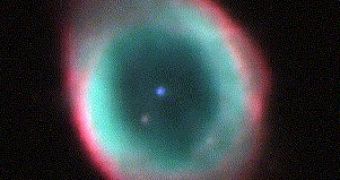At the center of the Milky Way galaxy, about 26,000 light years away, there is a supermassive black hole estimated to have a mass equal to about 4 million suns.
A few bright stars are known to orbit very close to it, and WIMPs (weakly interacting massive particles) may concentrate near this black hole. These particles may constitute a large portion of the dark matter in the universe, and could form extremely dense concentrations near supermassive black holes.
New data provided by GLAST (The Gamma-ray Large Area Space Telescope, a space-based gamma-ray telescope, designed to explore the high-energy Universe and to study astrophysical and cosmological phenomena such as active galactic nuclei, pulsars, other high-energy sources, and dark matter), observed that white dwarfs may be bullies in their old age.
White dwarfs - dense, collapsed stars in their final stage of life - could be skilled at swallowing and annihilating WIMPs. By sweeping close by, they could efficiently capture and "burn," or annihilate, many of them.
Physicists Igor Moskalenko and Lawrence Wai plan to glean GLAST data to learn whether these concentrations of dark matter exist. If these dark-matter annihilations were to be found, a spike in dark matter concentration near the black hole would betray much about the nature of our universe.
"The observation of stars orbiting close to the supermassive black hole at the center of our galaxy was a huge discovery," Wai said. "If some of those stars are WIMP burners, they could provide unique information on dark matter structure. This research could reveal a completely new kind of star, and could provide insight into how supermassive black holes evolve. We're very excited about this possibility."
Dark matter is matter, not directly observed and of unknown composition, that does not emit or reflect enough electromagnetic radiation to be detected directly, but whose presence can be inferred from gravitational effects on visible matter. According to the Standard Model of Cosmology, dark matter accounts for the vast majority of mass in the observable universe, and the GLAST observations could shed more light on this dark subject.

 14 DAY TRIAL //
14 DAY TRIAL //